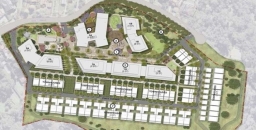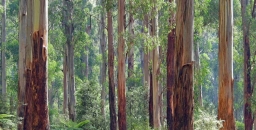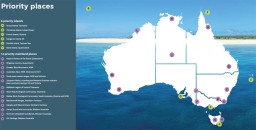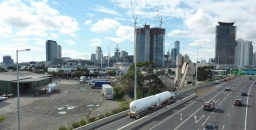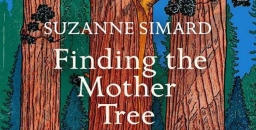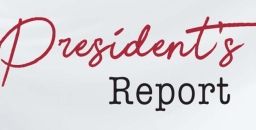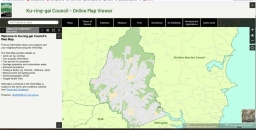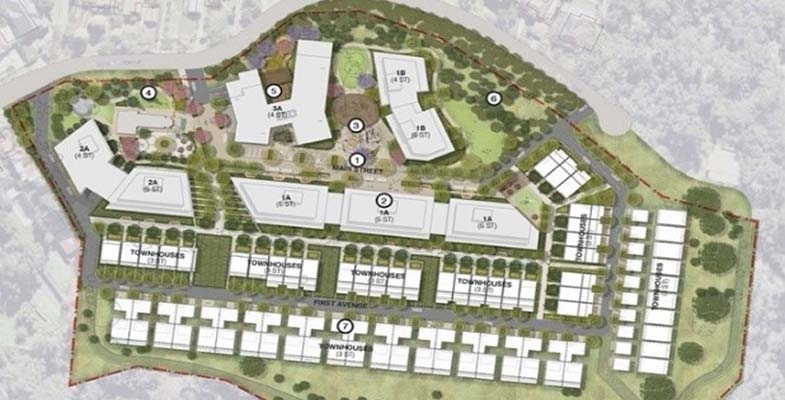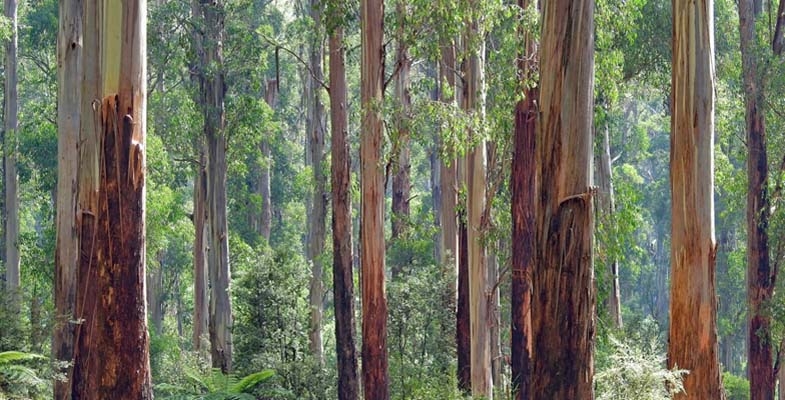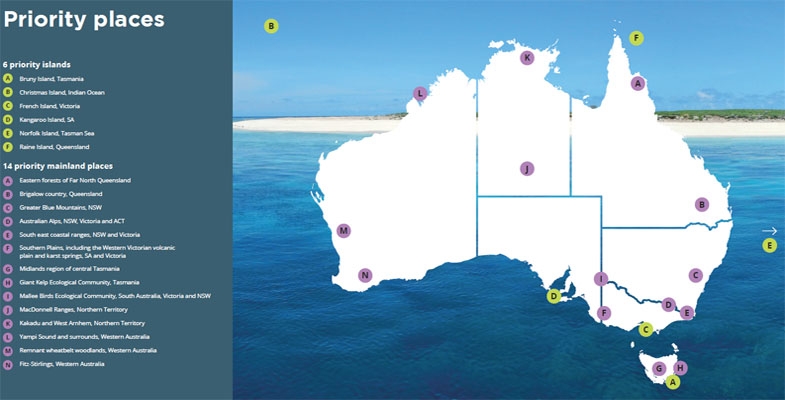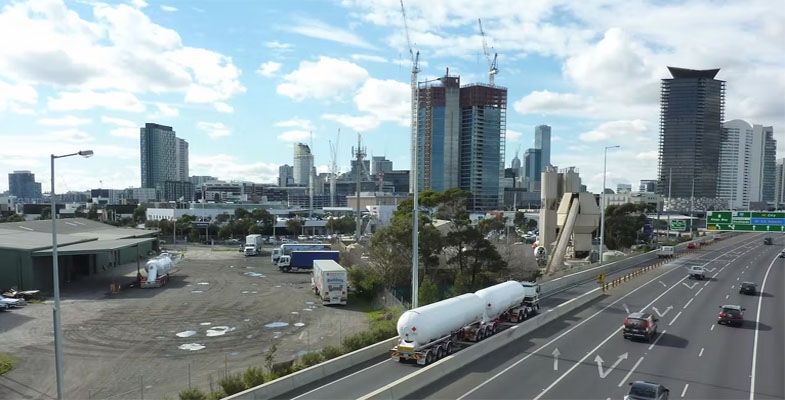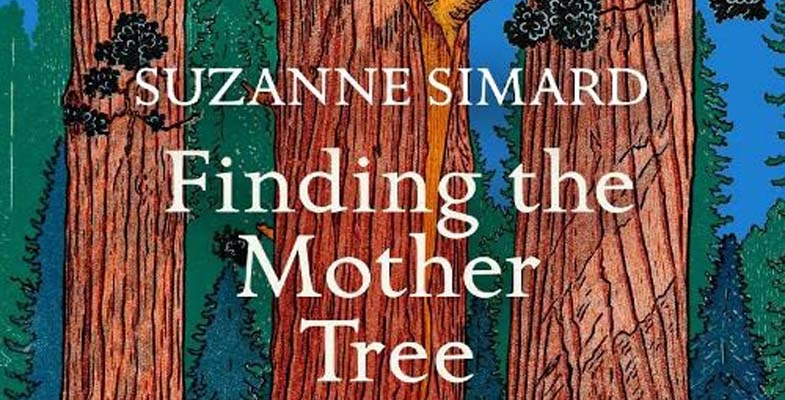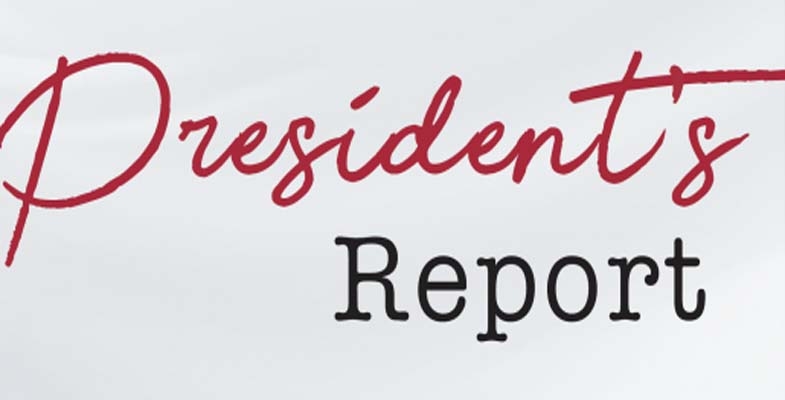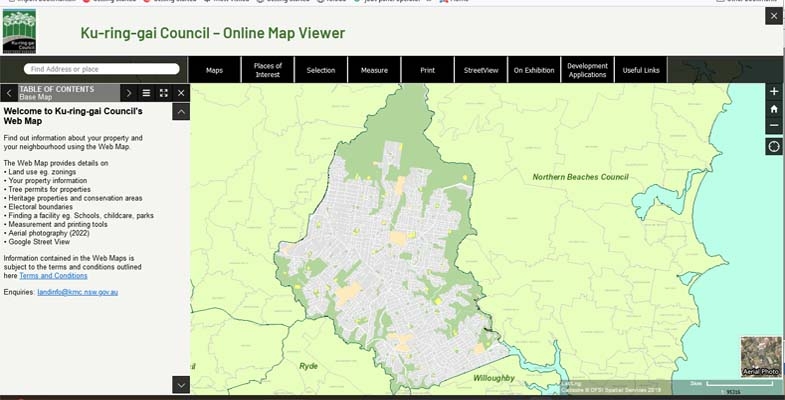STEP Matters 218
- Default
- Title
- Date
- Random
- The owner of Lourdes Retirement Village at the end of Stanhope Road in Killara have been trying for several years…Read More
- The Environmental Defenders Office (EDO) has been struggling to cover demand for its services since 2013 when the Federal Government…Read More
- NSW has two million hectares of public native forests along the coast. They are home to diverse wildlife and myriad…Read More
- There is a plethora of international agreements that relate to the protection of the Earth’s biodiversity. The overarching convention is…Read More
- Australian cities are good at growing – for decades their states have relied on it. The need to house more people…Read More
- It's difficult to write a simple review of this book because it works at several different levels. But first of…Read More
- Welcome to the annual report on the 44th year of operation of STEP Inc. Our lives have, in theory, returned…Read More
- STEP has given a prize for environmental projects in the Science Teachers Association of NSW Young Scientists Awards now for…Read More
- Ku-ring-gai Council has a new way for you to check whether a permit has been granted for trees being removed…Read More
Development plans for the Lourdes Retirement Village should be refused
The owner of Lourdes Retirement Village at the end of Stanhope Road in Killara have been trying for several years to do a major redevelopment of the site. The Friends of Ku-ring-gai environment (FOKE) have been monitoring the process for some time and, as reported on their Facebook page, the local state MP, Jonathan O’Dea has spoken in parliament expressing many concerns.
Approval of a development like this would establish a very bad precedent of high rise buildings in a low density residential area on a ridge top intruding deep into a bushland setting.
Lourdes Village is on 5.25 ha on the edge of steep bushland in Garigal National Park. It currently has 108 independent units, an 83-bed aged care home and 49 serviced apartments. The owner, Stockland, is proposing to rebuild the entire complex and increase dwellings to 141 independent units, 110-bed aged care home. Sixty-three medium density townhouses would also be built on the southern and eastern part of the site. The nature of the village will be changed from a focus on senior’s accommodation to a more general residential complex. Other planned features include landscaping works, 1400 m2 of communal space, new internal roadways, a community centre, swimming pool, a pavilion for outdoor functions and 398 car parking spots.
This sounds all very good as a place to live but what about the bushfire risk of being on the edge of the bush and the impact buildings 22 m high with a high number of residents will have in this location surrounded by low density housing?
The proposal would result in the population of the site rising from about 275 to 546 people, but with only a small increase in the number of beds for the aged. There is only one residential road into the area that ends in a cul-de-sac.
The proposal could only proceed if Ku-ring-gai Council’s local environment plan is amended to accept the proponent’s intention to greatly increase the nature of the ‘village’, namely:
- change the zoning from low-density to medium‑density residential (R2 to R3)
- change the maximum height of the buildings from 9.5 m (the usual R3 limit) to 22 m to allow for up to six or seven-storey residential flat buildings
- double the floor space ratio controls from 0.3 to 1 to 0.75 to 1 so that 389 car parking spaces can be incorporated
An illustrative master plan is shown below (source: Plus Architecture)
In recent years the Village has been rundown with units whose residents have left or died remaining vacant. This has contributed to the destruction of a sense of community for the remaining residents. The maintenance of some buildings and services has also been eroded since an earlier Stockland development attempt in 2018 was comprehensively rejected, including by Ku-ring-gai Council and the NSW Rural Fire Service.
Since the plan was submitted Stockland has sold all its retirement village developments to a private equity company, Levande which has taken over the development at Lourdes.
Local residents are strongly opposed as it is out of character with the surrounding low density housing. It will generate additional traffic onto a dead end street. Evacuation of residents in the case of a bushfire would be difficult.
Ku-ring-gai Council is opposed to this proposal as it has been to previous plans for reasons of bushfire risk and the inappropriate location for this type of development.
Next stage of the planning process
The proposal has been submitted as a Gateway proposal to the Department of Planning. It was assessed by the Sydney North Planning Panel and was accepted in July 2022. A period has been set for further submissions from the public (now closed) and some additional reports were requested by the panel. It is now before the Minister for Planning for final Gateway approval that could allow it to go to the development application stage.
Bushfire risks
One concerning aspect relates to the confirmation in the documents provided by the proponent that the bushfire protection standards will be met even though the risks of the site are rated in the highest category. They commissioned from Blackash Bushfire Consulting, a report that misrepresented RFS' current position as ‘endorsement’ of the rezoning. In fact, the RFS did not give approval but said analysis of the risks could be deferred to the next stage when more detail would be available about the building designs.
The assessment has to take into account the difficulties of evacuating the large number of aged residents. Statements have been made to the effect that the townhouses on the southern side will act as a shield against fire. Great protection for those residents living in these dwellings! The plans refer to shelters being provided within the site.
Ku-ring-gai Council has written a scathing submission to the planning panel. They are concerned a development like this will create the wrong precedent for this type of development to be accepted in a location like this. They commissioned an independent assessment of the bushfire risks.
The main conclusions made by council in their submission are:
- The proposal fails to demonstrate protections to the proposed increased population on the site, including vulnerable elderly, in an environment of changing climate patterns and the expected increased incidence and severity of fire related events.
- The exhibited bush fire report attached to the planning proposal contains no detail to substantiate the claims of safety to citizens.
- The planning proposal fails to provide transparent exhibited bushfire related evidence to warrant the departure from key strategic considerations that are applied to all other sites across the LGA and NSW and that, if approved, would set precedents detrimental to key work related to bushfire safety.
- Detailed design evidence pertaining to bushfire aspects cannot be deferred to the development application stage, it is required at this planning proposal master plan stage to determine if the increased dwellings and population on the site is warranted or not.
As Jonathan O’Dea said in the speech to state parliament:
I am seriously concerned that the proper planning and assessment process is at risk of being subverted for this site. Approval is not in the public interest, and I urge the new owners to rethink their plans. In any event, I believe the Minister for Planning should stop the planning proposal at Gateway.
Some good news for the EDO
The Environmental Defenders Office (EDO) has been struggling to cover demand for its services since 2013 when the Federal Government ended its funding. The states have also cut funding so they have had to depend increasingly on donations and pro bono services.
There was good news in the October Budget where this funding has been restored with $9.8 million over four years going to the EDO and Environmental Justice Australia plus a commitment for continuing funding of $2.6 million pa after that.
Let’s end native forest logging
NSW has two million hectares of public native forests along the coast. They are home to diverse wildlife and myriad forest ecosystems. Currently the primary use of these forests is timber production. Native forest logging takes place under regional forest agreements that are supposed to provide for ‘sustainable forest management’. Yet there are numerous examples of scarce hollow bearing trees and trees that provide koala habitat being felled. Forestry Corporation has been fined by the EPA multiple times for breaching forestry rules.
The loss of large areas of forest during the Black Summer bushfires has made the habitat provided by these forests all the more critical. Several species have been added to the threatened list since the fires, such as the koala, gang-gang cockatoo and greater glider.
These forests are also important for filtering water, slowing floodwater flows and storage of carbon. Forests can also provide opportunities for tourism and recreation both active and passive, such as bike riding, sightseeing and bushwalking.
Petition signed by over 21,000
In an attempt to end native forest logging a petition was launched by NSW Young Greens Indigenous Officer Takesa Frank and the Nature Conservation Council. It received more than 21,000 signatures which has forced parliament to respond.
The petition called for the NSW government to:
- develop a plan to transition native forest logging to 100% sustainable plantation forestry by 2024
- in the interim place a moratorium on logging until the regulatory framework is applied in line with the Natural Resources Commission recommendations
- immediately place high conservation value forests into the National Park estate
- immediately ban the use of native forest materials as biomass
The responsible Minister for Agriculture, the Hon Dugald Saunders, was dismissive. He claimed that the views of the 21,000 people who signed the petition are insignificant.
Some of the government’s arguments made in their response can be refuted, for example:
- Cutting down native forests is environmentally sustainable
Response: Current practices are destroying biodiversity such as loss of koala habitat and increasing the number of threatened species.
- Only a minority of people care about the issue
Response: A huge survey commissioned by the forestry industry in 2016 found that 70% of people in cities and 65% in regional areas are against native forest logging.
- Native forest logging is financially viable
Response: This industry is barely making a profit.
- Logging native forests will help overcome the shortage of construction timber
Response: The timber used by the construction industry is almost exclusively plantation pine. Meanwhile our native forests are chipped and shipped overseas for paper products.
- It is better to use local timbers than those from overseas
Response: Illegally logged timber is already banned from being imported to Australia, and many imported products meet the Forestry Stewardship Council (FSC) certification, a standard that NSW Forestry Corporation does not meet, because of its unacceptable impacts on biodiversity.
- Logging native forests employs 20,000 people
Response: The number of jobs is a twentieth of the total the minister claims, at 1,000 jobs across the whole of NSW. There are 20,000 jobs in the sustainable plantation industry
Cost-benefit analysis of the industry In the South Coast
A study by Frontier Economics found that there is economic benefit from ceasing native forest harvesting in the Southern and Eden forest regions of NSW. The economic analysis measures the stream of costs and benefits over a 30 year period to 2051. The net result was a gain of $62 million if the state-owned native forests are no longer harvested.
The report took a simplified approach by restricting the analysis to compare the existing operations with the creation of a mountain bike park. This covered:
- costs: loss of value of harvested wood and construction and maintenance of mountain bike recreation area
- benefits: avoided costs of harvesting wood and processing, value of carbon credits, economic value of recreation
More complex factors were not included such as the value of wildlife saved and visitor tourism apart from mountain biking.
In conclusion, Frontier Economics found that Forestry Corporation NSW’s hardwood business made a normalised profit of $0.4 million in the financial year 2020, and an average normalised profit of $2.3 million over the five years to 2020. This is a very small profit and significantly smaller than the $64 million five year average over the same period earned by their softwood plantation business.
This poor return should be taken in context with the economic benefit from ceasing native forest harvesting and obtaining environmental and recreational services from the forest. This, along with the environmental concerns, has led Victoria and WA to decide to cease logging their native forests and to provide significant financial support to the industry to transition to a greater focus on plantation operations and other sectors of the economy. Now it’s time for NSW to also make the commitment.
Private land forestry
Currently, logging operations on private property in many areas have dual oversight from both the state government and local councils. Local councils have the ability to limit and control logging operations within their region. Just this month the National Party tried to revive the ‘koala wars’ by introducing a bill before the NSW parliament to remove this control. Fortunately several Liberal MPs threatened to vote against the bill and it has been withdrawn.
30 x 30 Biodiversity Agreement
There is a plethora of international agreements that relate to the protection of the Earth’s biodiversity. The overarching convention is the Convention on Biological Diversity (CBD) that was signed by 150 government leaders at the 1992 Rio Earth Summit. Examples of other agreements are the Ramsar Convention that aims to protect internationally significant wetlands and the Convention on International Trade in Endangered Species of Wild Fauna and Flora (CITES). They don’t all work in isolation thank goodness! There is a Liaison Group of the Biodiversity-related Conventions.
The most recent major strategic plan to address the sad state of global biodiversity was the agreement to adopt the 20 Aichi Biodiversity Targets for 2010–20 period. The meeting was held in Aichi Prefecture in Japan; hence the name.
However, according to an assessment by the United Nations, none of the 2020 Aichi targets were met. At the moment, committing to the Aichi targets is voluntary and results from each party are self-reported to the CBD. Because these agreements are non-binding, the path to translating and implementing targets into national legislation is unclear.
One major reason for the lack of progress has been the continuation of subsidies and other incentives potentially harmful to biodiversity. An estimated $500 billion in government subsidies potentially cause environmental harm, according to the UN report.
Progress in establishing protected areas
One area of progress is the target relating to the establishment of protected areas. The objective was that by 2020, at least 17% of terrestrial and inland water, and 10% of coastal and marine areas, especially areas of particular importance for biodiversity and ecosystem services, are conserved. This target has been nearly met with 15% of land and 7% of oceans being protected by 2020.
What happens post 2020?
The countries that signed the CBD have their own COPs (Conference of the Parties) just like the UN Framework Convention on Climate Change. The 15th meeting is a whole series of meetings with the first held in 2021 to develop a strategic plan post 2020. This meeting was hosted by China from the city of Kunming. Parties to the CBD adopted the Kunming Declaration to keep the political momentum of the negotiations delayed by the COVID-19 pandemic.
The Kunming Declaration recognised that progress has been made in the last decade, under the 2011–20 Strategic Plan for Biodiversity but expressed grave concern that such progress has been insufficient to achieve the Aichi Biodiversity Targets. It acknowledges that:
the unprecedented and interrelated crises of biodiversity loss, climate change, land degradation and desertification, ocean degradation, and pollution, and increasing risks to human health and food security, pose an existential threat to our society, our culture, our prosperity and our planet.
The declaration includes a long list of principles that are being developed into a Post 2020 Global Biodiversity Framework for actions. The framework is built around the recognition that urgent policy action is required to turn around the trend of biodiversity loss. The objective is that the trend should stabilise in the next 10 years (by 2030) and allow for the recovery of natural ecosystems in the following 20 years. The ultimate goal is to achieve the Convention’s vision of ‘living in harmony with nature by 2050’.
The 30 × 30 pledge
The Declaration notes a first step, the pledge by many countries to protect and conserve 30% of land and sea areas through well-connected systems of protected areas and other effective area-based conservation measures by 2030. This known as the 30 × 30 pledge.
More than 100 countries have pledged to adopt this goal including the USA. Joe Biden announced his commitment a week after he became president.
There are lots of other goals in the Kunming Declaration. The details of measures to achieve these goals will be hammered out at COP15 of the UN Convention on Biological Diversity in Montréal, Canada, from 5–17 December 2022.
Australia’s response
The Minister for the Environment, Tanya Plibersek, in releasing the 2021 State of the Environment Report, announced that Australia will aim to exceed the 30 × 30 agreement. This will require additional 50 million hectares of landscape to be protected. This does not need all to be in national parks.
Under the government’s plan 20 places and 110 species will become the focus of conservation efforts selected based on several factors including their uniqueness and risk of extinction. The areas include the forests of Far North Queensland, Kakadu National Park in the Northern Territory and Kangaroo Island in South Australia.
This announcement raises many questions. As the Chief Conservation Officer of the World Wildlife Fund points out, Australia has more than 1,900 listed threatened species. This plan picks 110 winners. It’s unclear how it will help our other ‘non priority’ threatened species such as our endangered greater glider.
Given the powers that the states have over management of protected areas and land clearing, how will the selection of the additional protected areas be determined? Can it be on a bioregional basis that ignores state boundaries. How will the ocean areas be defined – as sanctuary zones?
An article on the NPA NSW website explains the task at hand. The WWF commissioned protected areas spatial analyst Dr Martin Taylor to estimate what it would take to create a truly ecologically representative network of protected and conserved areas as part of the 30% target.
Protected land objectives required for NSW
In NSW, 7.6 million hectares of land occurs in the National Reserve System, equivalent to just 9.6% of the total land area. Moreover, more than 60% of ecosystems have less than 15% of their area protected.
Achieving significant progress towards protecting 30% of NSW would require not just a significant expansion of legal protection, but also revegetation and rewilding of millions of hectares of long-cleared lands in the sheep and wheat belt. This would require significant investment from state and federal governments as well as corporate and philanthropic support through natural capital markets. In some cases creation of new protected areas may be contested by some locals. It is also becoming less realistic as global heating and extreme weather events worsen.
Completing the transition out of native forest logging could secure an additional two million hectares of public native forests. Transfer of Crown lands, including large areas of travelling stock routes with high conservation values, to NPWS or Indigenous communities for conservation management, would need to be a major contributor to the 30% target. Supporting First Nations to voluntarily declare additional Indigenous Protected Areas could play a key role. Purchases of large pastoral stations in the Western Division could provide land justice for Indigenous communities through handback or co-management, and diversify rural economies as global heating increasingly makes some grazing and farming enterprises sub-economic.
The Biodiversity Conservation Trust’s capacity to support private landholders to establish conservation agreements would need to be greatly expanded – without relying upon perverse offsets – including through innovative partnerships that also deliver carbon outcomes with social, cultural and economic co-benefits.
The case for degrowth: Stop the endless expansion and work with what our cities already have
Australian cities are good at growing – for decades their states have relied on it. The need to house more people is used to justify expansion out and up, but it is the rates, taxes and duties that flow from land transfers and construction that drive the endless development of Melbourne and Sydney in particular. Property development is the single largest contributor to Victorian and New South Wales government revenues.
For example, the City of Melbourne’s draft spatial plan proposes new suburbs to the west and north. It’s continuing on a course mapped out in the post-recession 1990s, when Australian governments focused on building on or digging up our great expanses. The plan neither questions the rationale for growth nor, apparently, the deeper effects of the pandemic.
The city council is understandably anxious to attract people back to the centre. The city plan presumes a return to Australia’s high population growth of the 2000s. Expectations of a renewed influx of students, workers and tourists from overseas are based more on hope, however, than reason.
The drivers of population growth are more uncertain and we can no longer depend on global mobility at pre-pandemic levels. Birth rates are falling across the developed world, online international education is improving, and research suggests pandemics will persist while cities encroach on the habitats of so many other species.
Meanwhile, the towers thrown up in the heady years of growth are half-empty and cracking, poorly ventilated, reliant on central air conditioning and not built for more extreme weather or low energy consumption. Melbourne and Sydney’s showcase regeneration projects at Docklands and Barangaroo are more dismal and deserted than ever.
Better needn’t mean bigger
Now is not the time for anyone to announce that their city will become “bigger and better”. Cities don’t have to get bigger to evolve, and sooner or later all will have to reckon with the concept of degrowth.
Australia must become less reliant on imports of skilled workers, students, tourists and materials. We can make better use of local resources and produce much more of what we need here.
Australian cities have very good bones. They have amazing cultural scenes. Their biomedical capabilities are among the world’s best. Our education sector remains eminently exportable online and via existing overseas campuses. The manufacturing sector still has a base to build on and provide many more of the products Australians need. And our renewable energy capacity is unlimited.
We can support our local hospitality and cultural venues better, and increase intercity and interstate patronage. We can invest in research and development and maintain wealth through innovation and production, rather than the eternal consumption of land.
Rethink what we build and why
Adapting to global environmental conditions means rethinking not just what and how we build, but why. Before designating land for yet more housing estates, for example, let’s consider that a million homes – 10% of Australia’s housing stock – were empty on census night last year. Nearly 600,000 were in Victoria and New South Wales.
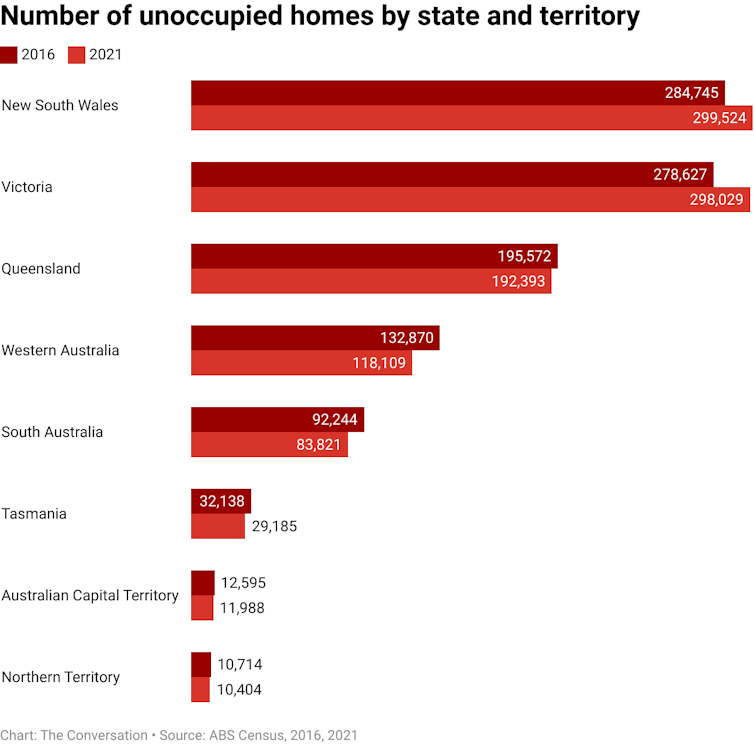
Think tank Prosper Australia has for years demonstrated shocking numbers of vacant dwellings unavailable for rent. A hefty vacancy tax – much greater than the Victorian rate of 1% of property value, while NSW still has none for Australian owners – would lead to many more homes being released onto the market.
The property developers’ argument that we have to build more because that’s the only way to make housing more affordable has been repeatedly refuted by years of careful research.
Tens of thousands of upmarket dwellings have been added to the inner cities of Melbourne and Sydney over the past 20 years, with no reduction in prices across the board. While upmarket unit prices might drop a little when vacancy rates in that submarket increase, their developers are keenly alert to any dip in profits. At the slightest hint of surplus they just stop building.
If housing affordability is the object of urban expansion, let’s grasp that nettle: the only way to achieve it is to build affordable housing, it’s that simple. More than enough land is available within the urban growth boundaries for residential development.
Recent research from Prosper shows there are 84,000 undeveloped housing lots on nine Australian master-planned estates alone. This does not include the many inner-city regeneration projects already under way. Social housing in these areas should be the focus of urban planning before any more land is released.
What about ‘under-developed’ urban lands?
Further expansion of the inner cities of Melbourne and Sydney can only encroach onto low-lying, flood-prone industrial lands that were long ago deemed unsuitable for residential development. It would be folly, or very expensive, to build housing there.
These areas are and still can be used for manufacturing, however, and not just the new niche urban manufacturers that gentrifying councils so love to love. Older industries that are even now being displaced from Fishermans Bend in Melbourne and Blackwattle Bay in Sydney can easily coexist with artisanal bakeries and coffee roasters.
The imperative to promote sustainable local production is stronger than ever now that the pandemic and war have exposed the vulnerabilities of global supply lines. Our diminishing industrial lands really should be kept for industry, until such time as sea-level rise claims them as wetlands.
This is not an argument for decreasing construction activity: there is much work to be done retrofitting existing buildings. These need to be re-clad, better ventilated, opened to passive cooling and adapted to a warming climate.
The ongoing regeneration projects in Melbourne and Sydney need a lot more attention. Docklands, Darling Harbour and Barangaroo could become useful with some serious interventions. The emerging Fishermans Bend and Blackwattle Bay developments have already released more land than their planners know what to do with.
A forward-looking city plan would consolidate and advance what that city already has. That’s the way to build revenue streams that are environmentally, socially and politically sustainable.![]()
Kate Shaw, Honorary Senior Fellow in Urban Geography and Planning, The University of Melbourne
This article is republished from The Conversation under a Creative Commons license. Read the original article.
Book review: Finding the mother tree: Uncovering the wisdom and intelligence of the forest
It's difficult to write a simple review of this book because it works at several different levels. But first of all, it's superb. It possibly has had more personal effect than any other I've read in the past few years.
Initially a British Columbia (BC) forest service employee, Suzanne Simard's observations didn’t tally with current forestry practises and this triggered her curiosity that led to her innovative research on forests and their trees
Ultimately its publication led to the coining of the term ‘wood wide web’ as she explored the way trees exchange nutrients and information via extensive fungal threads linking root systems, between mature parent ‘mother trees’ and their saplings but also linking totally unrelated species like birch and pines.
In this she soon came up against the entrenched government ‘free to grow’ policy which invoked the clearing of land of everything that might compete with commercial timber species. However her work, including measuring the movement of carbon and nitrogen isotopes, clearly showed this is not only unnecessary and costly but often strongly deleterious. It strongly supported the conclusion that healthier more productive forests resulted from keeping natural plant and animal communities as intact as possible.
On another level this book is autobiographical, and written by someone who was raised as the child of a forestry family in the Monashee Mountains of BC (between Kamloops and Banff) who grew up close to wild, forested country and absorbed much in the ways of people and animals in her home territory. One can very much read and enjoy this well written book at that level, and feel for all her conflicts, overcoming fear of public speaking, clashes with institutional practise and established scientific beliefs, family tragedies, and her own battle with cancer.
But there's yet another level too: much of the outcome of her research accords with long held beliefs by First Nations people that forests are a living, interactive, whole systems that communicate beneath the soil in mutually supportive ways. Such beliefs submitted for publication of course would not be accepted by any scientific journal, however her meticulous and patient supportive work most definitely has been, many, many times – she's now Professor of Forest Ecology at the University of BC.
And how does all this translate to our local forests? Do blue gums liaise with and feed and support their babies? Angophoras and turpentines often grow side by side, even touching one another, so do they also fungi-talk to each other through their roots? And what is the story now with ‘free to grow’ style clear felling? When we first set up home in Perth in the 1970s, WA's karri forests were managed on a ‘mother tree’ style basis (though I don’t remember if they used that term) leaving the biggest, healthiest trees intact to propagate for the future.
Author: Suzanne Simard
Allen Lane (Penguin) paperback, 348pp
Reviewed by John Martyn
President’s annual report for the year to October 2022
Welcome to the annual report on the 44th year of operation of STEP Inc. Our lives have, in theory, returned to normal during 2022 apart from the lingering effects of the COVID virus. One disruptor has been the persistent rain with 2022 achieving the record of being the wettest year in Sydney since records began. The effects on our bushland will be apparent in years to come.
The political landscape has brightened considerably at the federal level. We await the implementation of new environment policies in relation to biodiversity that the 2021 State of the Environment Report revealed to be very poor. We hope for changes at the state level following the election due in March 2023.
Looking back over 2022 I am surprised by how busy this year has been with the resumption of most activities for members and plenty of demand for submissions and meetings.
Activities
Talks: After several attempts were stymied by COVID we finally managed to arrange a talk by Shane Fitzsimmons, Commissioner of Resilience. Ironically this took place in February just before the severe flooding events on the north coast. He gave a vivid description of the behind the scenes management of the Black Summer fires, particularly the stress placed on the emergency personnel.
Four other talks were held on the role of fungi in ecosystem health and the need to include fungi in bushland restoration programs, banksia regrowth after fire, threatened plant translocation and taxonomy.
Walks: We scheduled eight walks that featured local plants and indigenous knowledge. Unfortunately, two had to be cancelled because of bad weather. We thank our volunteer leaders, David Roberts, John Martyn, Greg Taylor, Helen Logie and Fran Rein who shared their local knowledge and Beverley Gwatkin who has organised these walks.
Publications: We are still offering a year’s free membership to anyone who buys a book or map. Sales of our maps is still strong and there is a steady demand for our books.
The supply of Middle Harbour North maps has now run out. We plan to complete a reprint early in 2023.
Committee
The STEP committee has, as always, been a great group of people to work with. We owe a huge thank you for all their efforts.
We thank Jim Wells for keeping track of our finances and compiling monthly finance reports. John Burke and Trish Lynch continue to keep Twitter and Facebook up to date and find lots of interesting items to add on a regular basis.
There have been several issues to review this year, often this is in association with other groups. The contribution of all committee members has been valuable. As always life would be easier if we could get more members on the committee!
Accounts
The net cash balance at the end of the financial year has increased compared to last year because last year’s fee holiday reduced our revenue.
The Environment Protection Fund (EPF) balance is on hold in case a major issue arises. We need to maintain this separate fund that is part of our deductible donation status. The Fund’s purpose is to support our environmental objectives. We received a total of $530 in donations in the past financial year.
Our general fund can be used to support educational projects as well as the EPF. We are keen to support more environmental projects so please contact us if you have any ideas.
Again we thank Allan Donald, Chartered Accountant for his completion of the audit on a pro bono basis.
Newsletter
We are continuing to publish five issues of the newsletter, STEP Matters, each year with most members receiving a pdf version via email. Links to individual topics are also included in the email and are on our website so anyone can pick out particular articles of interest. These articles also have links to previous articles on related topics.
While the newsletter concentrates on local issues and events we also cover broader national environmental issues that affect us all. We aim to be educational but not too technical. I hope they are of interest, but feedback is welcome. Also, contributions from members about local events and developments can be published in the newsletter or on Facebook.
Education grants
We did not receive any applications for the John Martyn Research Grant for 2022 and hope there will be more to consider in the future. This grant supports student research in an area relating to the conservation of bushland. In the end we awarded a grant to one of the applicants from a previous year to continue her work at the University of NSW on threatened species conservation through the use of translocation focussing on Hibbertia spanantha.
For many years STEP has been donating a prize in the Young Scientist Awards run by the NSW Science Teachers Association. The selection of a winning project out of a wide range of ecological issues is an interesting exercise. This year’s award went to a project on the use of organic methods to reduce heavy metals in waterways.
Advocacy
The major issues we have been working on are synthetic turf as part of the Natural Turf Alliance and mountain bike track plans and illegal activity. We are still waiting for the environmental review for the synthetic turf development at Norman Griffiths Oval. Major submissions were made on the Hornsby Quarry and Westleigh Park developments, Ku-ring-gai Urban Forest Strategy and NPWS cycling strategy. The Mirvac development at West Pennant Hills continues to need scrutiny and submissions.
Conclusion
A community group like STEP works best with many lines of communication. We enjoy a good relationship with other community groups and local council staff. Information sharing is an important part of our work. To that end we appreciate feedback from our members and reports on local issues that we may not be aware of. It is becoming harder to keep track of local developments as the local newspapers have shrunk considerably.
Young Scientist Awards 2022
STEP has given a prize for environmental projects in the Science Teachers Association of NSW Young Scientists Awards now for 21 years, in the form of money plus our book publications. This year’s award ceremony was in the Great Hall of UTS on Broadway. The ceremonies involve prize awards punctuated by light and humorous keynote addresses on aspects of science, its philosophy and education.
This year there were 127 prizes awarded in diverse aspects of STEM subjects, sponsored by the Science Teachers Association plus many donors including AARNET, Rowe, Australian Water and several scientific organisations. Many students, including STEP’s choice, received several awards. Ages ranged from K2 to year 12; and it’s heartening to see ‘tiny tots’ bouncing up onto the stage for their prizes and knowing that interest, enthusiasm and education start very young if properly stimulated and managed.
STEP chooses from a suite of environmental projects, usually five to eight in number, pre-selected by STANSW chief co-ordinator Anjali Rao. Past topics have ranged from those directly related to bushland to broad based studies on topics such as microplastics. A major STEP winner from four years ago lived on a cattle farm and studied the control of noxious pasture weeds.
This year’s winner Lily Rafail in Year 8 from Presbyterian Ladies College investigated the use of the semiaquatic plant Bacopa monnieri, plus avocado skins, in removing heavy metal pollutants from natural waterways. Her submission won four prizes from other donors including an award for science communication.
Concerned about a tree being chopped down … now you can find out more
Ku-ring-gai Council has a new way for you to check whether a permit has been granted for trees being removed in your neighbourhood. If you go to www.krg.nsw.gov.au/webmap you can look up this information using the address of the property. If you have any concerns that a tree is being illegally removed, please call 9424 0000.

